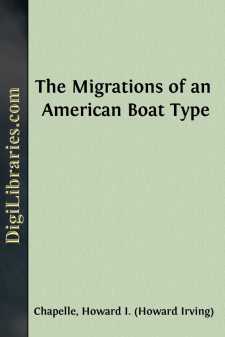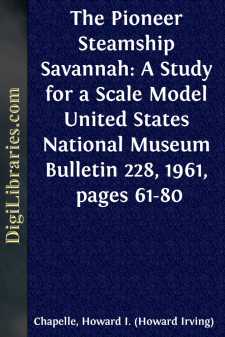Categories
- Antiques & Collectibles 13
- Architecture 36
- Art 48
- Bibles 22
- Biography & Autobiography 813
- Body, Mind & Spirit 142
- Business & Economics 28
- Children's Books 17
- Children's Fiction 14
- Computers 4
- Cooking 94
- Crafts & Hobbies 4
- Drama 346
- Education 46
- Family & Relationships 57
- Fiction 11829
- Games 19
- Gardening 17
- Health & Fitness 34
- History 1377
- House & Home 1
- Humor 147
- Juvenile Fiction 1873
- Juvenile Nonfiction 202
- Language Arts & Disciplines 88
- Law 16
- Literary Collections 686
- Literary Criticism 179
- Mathematics 13
- Medical 41
- Music 40
- Nature 179
- Non-Classifiable 1768
- Performing Arts 7
- Periodicals 1453
- Philosophy 64
- Photography 2
- Poetry 896
- Political Science 203
- Psychology 42
- Reference 154
- Religion 513
- Science 126
- Self-Help 84
- Social Science 81
- Sports & Recreation 34
- Study Aids 3
- Technology & Engineering 59
- Transportation 23
- Travel 463
- True Crime 29
The Migrations of an American Boat Type
Categories:
Description:
Excerpt
For a commercial boat to gain widespread popularity and use, it must be suited to a variety of weather and water conditions and must have some very marked economic advantages over any other boats that might be used in the same occupation. Although there were more than 200 distinct types of small sailing craft employed in North American fisheries and in along-shore occupations during the last 60 years of the 19th century, only rarely was one of these boat types found to be so well suited to a particular occupation that its use spread to areas at any great distance from the original locale.
Those craft that were "production-built," generally rowing boats, were sold along the coast or inland for a variety of uses, of course. The New England dory, the seine boat, the Connecticut drag boat, and the yawl were such production-built boats.
In general, flat-bottomed rowing and sailing craft were the most widely used of the North American boat types. The flat-bottomed hull appeared in two basic forms: the scow, or punt, and the "flatiron," or sharp-bowed skiff. Most scows were box-shaped with raking or curved ends in profile; punts had their sides curved fore and aft in plan and usually had curved ends in profile. The rigs on scows varied with the size of the boat. A small scow might have a one-mast or two-mast spritsail rig, or might be gaff rigged; a large scow might be sloop rigged or schooner rigged. Flatiron skiffs were sharp-bowed, usually with square, raked transom stern, and their rigs varied according to their size and to suit the occupation in which they were employed. Many were sloop rigged with gaff mainsails; others were two-mast, two-sail boats, usually with leg-of-mutton sails, although occasionally some other kind of sail was used. If a skiff had a two-mast rig, it was commonly called a "sharpie"; a sloop-rigged skiff often was known as a "flattie." Both scows and flat-bottomed skiffs existed in Colonial times, and both probably originated in Europe. Their simple design permitted construction with relatively little waste of materials and labor.
Owing to the extreme simplicity of the majority of scow types, it is usually impossible to determine whether scows used in different areas were directly related in design and construction. Occasionally, however, a definite relationship between scow types may be assumed because of certain marked similarities in fitting and construction details. The same occasion for doubt exists with regard to the relationships of sharp-bowed skiffs of different areas, with one exception—the large, flat-bottomed sailing skiff known as the "sharpie."
THE NEW HAVEN SHARPIE
The sharpie was so distinctive in form, proportion, and appearance that her movements from area to area can be traced with confidence. This boat type was particularly well suited to oyster fishing, and during the last four decades of the 19th century its use spread along the Atlantic coast of North America as new oyster fisheries and markets opened. The refinements that distinguished the sharpie from other flat-bottomed skiffs first appeared in some boats that were built at New Haven, Connecticut, in the late 1840's. These craft were built to be used in the then-important New Haven oyster fishery that was carried on, for the most part, by tonging in shallow water.
The claims for the "invention" of a boat type are usually without the support of contemporary testimony. In the case of the New Haven sharpie two claims were made, both of which appeared in the sporting magazine Forest and Stream. The first of these claims, undated, attributed the invention of the New Haven sharpie to a boat carpenter named Taylor, a native of Vermont. In the January 30, 1879, issue of Forest and Stream there appeared a letter from Mr....




